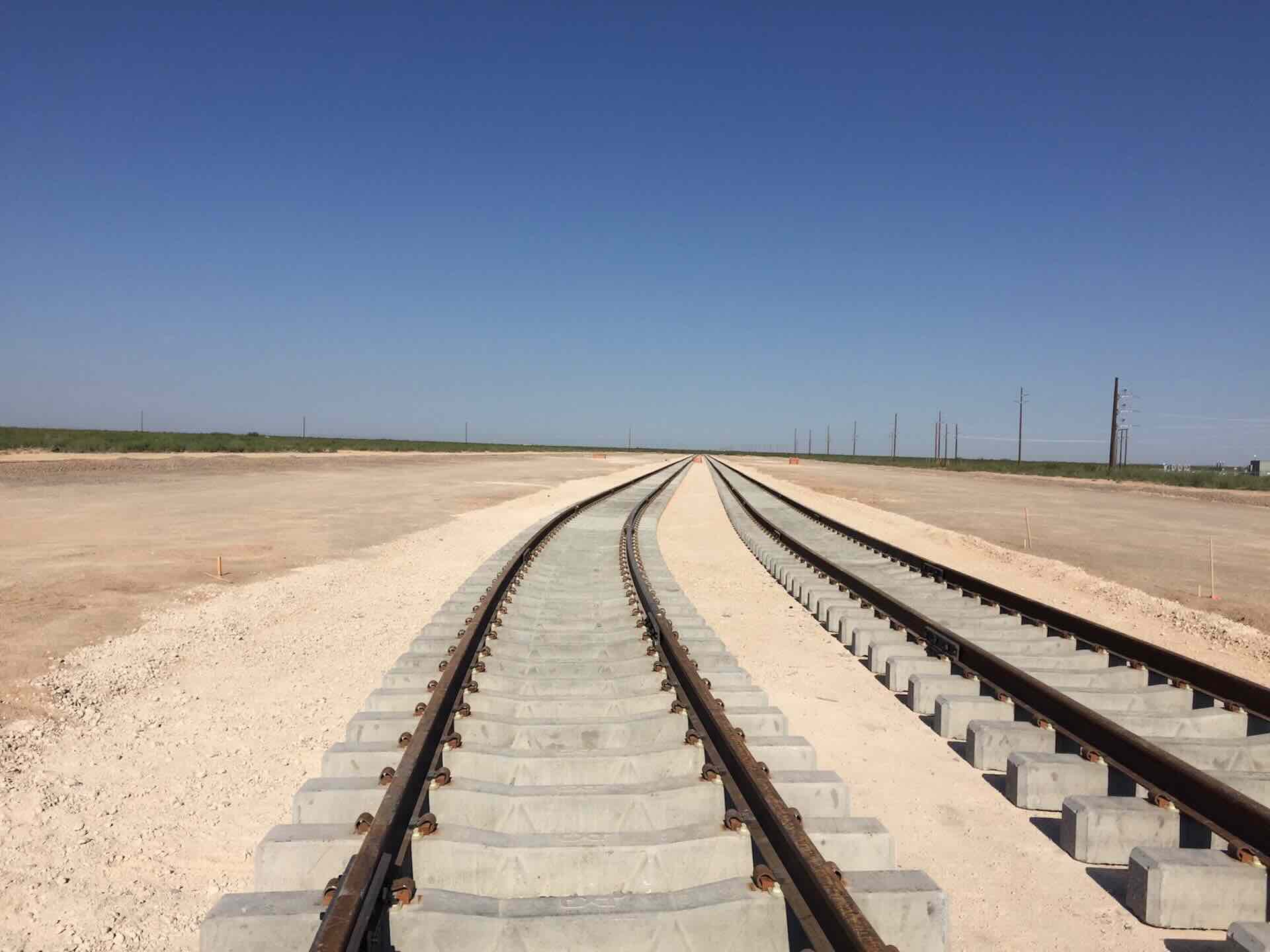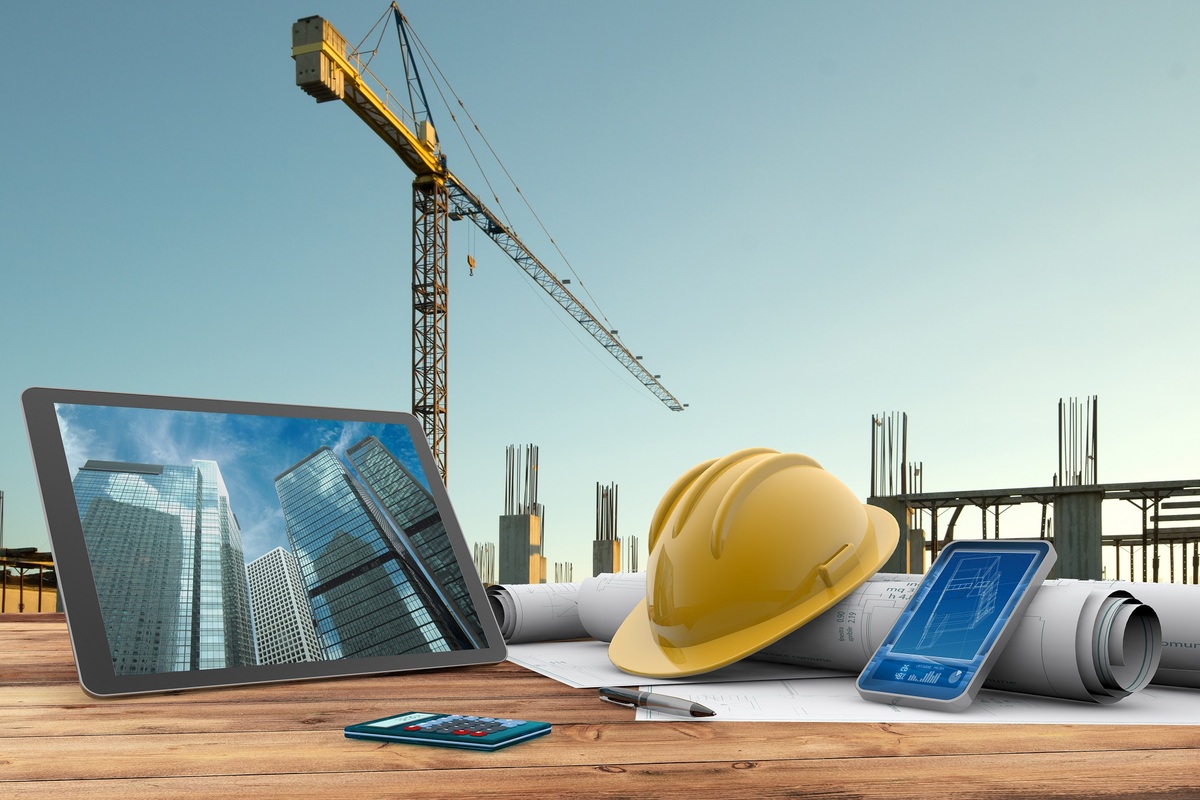Home>diy>Building & Construction>How Was Railroad Construction Made Possible?


Building & Construction
How Was Railroad Construction Made Possible?
Modified: December 7, 2023
Discover how building construction techniques paved the way for the remarkable rise of railroad infrastructure. Gain insights into the methods and advancements that made this revolutionary transportation system possible.
(Many of the links in this article redirect to a specific reviewed product. Your purchase of these products through affiliate links helps to generate commission for Storables.com, at no extra cost. Learn more)
Introduction
Railroad construction revolutionized transportation and had a profound impact on the development of societies around the world. The ability to transport goods and people quickly and efficiently on a large scale transformed economies, opened up new markets, and brought distant regions closer together. But how exactly was railroad construction made possible? In this article, we will explore the various factors that contributed to the successful construction of railroads.
The construction of railroads was a complex and challenging endeavor that required significant technological advancements, substantial financial backing, government support and regulation, as well as a skilled labor force. Let’s delve deeper into each of these factors to understand their significance.
Key Takeaways:
- Railroad construction revolutionized societies, economies, and transportation through technological advancements, financial backing, government support, and a skilled labor force, shaping modern societies and leaving a lasting impact on global transportation.
- Despite facing challenges such as navigating difficult terrains, acquiring land, securing funding, and managing legal and political hurdles, the construction of railroads showcased human ingenuity, determination, and cooperation, leaving a lasting legacy in global transportation.
Read more: How To Use Railroad Ties For Landscaping
The Impact of Railroad Construction
The construction of railroads had a transformative impact on societies in multiple ways. Firstly, it facilitated the movement of goods and resources over long distances like never before. This allowed for the efficient transportation of raw materials, such as coal and iron, from mines to manufacturing centers, enabling industrial growth and development. The availability of cheap and reliable transportation also spurred the expansion of agriculture and trade, as farmers and merchants were able to transport their products to distant markets with ease.
Secondly, railroads played a crucial role in urbanization by connecting rural areas to rapidly growing cities. This led to the migration of people from rural areas in search of job opportunities and better living conditions. The accessibility provided by railroads made it possible for people to commute to work in the cities while residing in the suburbs, thus shaping the modern concept of suburbia.
The construction of railroads also had a significant impact on communication and the spread of ideas. The development of telegraph lines alongside railway tracks allowed for rapid transmission of information, revolutionizing communication and connecting people across vast distances. This advancement facilitated the exchange of ideas, news, and knowledge, contributing to social and cultural development.
Furthermore, railroads played a crucial role in shaping territorial expansion and political landscapes. In many countries, the construction of railroads was closely tied to colonial and imperial ambitions. It enabled the exploitation of resources in distant territories, facilitating the growth of empires. Railroads also played a pivotal role in military logistics, allowing for the rapid movement of troops and supplies during times of conflict.
Overall, the impact of railroad construction cannot be overstated. It revolutionized transportation, stimulated economic growth, facilitated urbanization, transformed communication, and shaped political landscapes. The construction of railroads laid the foundation for modern societies and continues to influence our lives today.
Technological Advances
The successful construction of railroads was made possible by significant technological advances. During the 19th century, engineers and innovators developed groundbreaking technologies that revolutionized the way railroads were built and operated.
One of the most important technological advancements was the development of the steam engine. Steam locomotives provided the power needed to pull heavy loads and travel at high speeds. The invention of the steam engine by James Watt in the late 18th century paved the way for the creation of steam locomotives, which became the workhorses of the railroad industry.
Another crucial innovation was the development of iron and steel production techniques. The construction of railroads required large quantities of iron and steel for the tracks and locomotives. The Bessemer process, invented in the 1850s, made it possible to produce high-quality steel at a lower cost, enabling the mass production of rails and locomotive components.
Advancements in bridge construction also played a significant role in railroad development. Engineers designed sturdy bridges capable of withstanding the weight of rolling stock and spanning rivers, valleys, and canyons. Innovations such as truss bridges and iron girders made it possible to construct long, durable bridges that could support heavy trains.
The development of surveying and mapping techniques was essential for ensuring the accuracy of railroad alignments. Engineers used precise measurement methods to determine the optimal routes, taking into account factors like elevation changes, curves, and gradients. Accurate surveys and maps were crucial for the smooth operation and safety of trains.
Telegraph technology also played a critical role in railroad construction. The ability to communicate rapidly over long distances enabled effective coordination and ensured the safe operation of trains. Telegraph lines were installed along the railroad tracks, allowing for instant communication between various stations and signal towers.
Throughout the history of railroad construction, engineers and inventors constantly pushed the boundaries of technology to overcome challenges and improve efficiency. The technological advancements made during this era laid the foundation for modern transportation systems and continue to influence engineering practices and transportation infrastructure to this day.
Financial Backing and Investment
The successful construction of railroads was heavily reliant on significant financial backing and investment. Building a railroad network required substantial funds for land acquisition, surveying, grading, construction of tracks, bridges, and tunnels, as well as the procurement of locomotives and rolling stock.
Private investors played a crucial role in financing railroad construction. Wealthy individuals and business tycoons saw the potential for profit and invested heavily in the construction of railroads. They formed railroad companies and raised capital by selling shares and bonds to investors. These funds were then used to finance the various construction activities required to build the railroad infrastructure.
Government support also played a significant role in ensuring the financial viability of railroad projects. Governments often provided incentives such as land grants and subsidies to encourage the construction of railroads. Land grants were particularly valuable, as they provided railroad companies with vast tracts of land along the proposed routes. Companies could sell or develop this land to generate additional revenue and recoup the construction costs.
In some cases, governments directly invested in railroad projects. They provided loans or grants to allow for the construction of critical rail links, especially in regions deemed strategically important or lacking adequate transportation infrastructure. Government involvement in financing railroad construction was often driven by the desire to stimulate economic growth, connect regions, and promote national unity.
Additionally, banks and financial institutions played a significant role in providing loans and financing options for railroad construction. They recognized the potential profitability of railroads and were willing to provide the necessary capital to fund the projects.
Overall, the financial backing and investment in railroad construction were crucial factors in the successful completion of projects. The availability of substantial funds from private investors, government support, and financial institutions ensured that the necessary resources were available to build the railroads and establish the foundation for a modern transportation system.
The construction of railroads was made possible through the use of new technologies such as steam power, iron and steel production, and improved engineering techniques. These advancements allowed for the efficient and cost-effective building of railroads across vast distances.
Government Support and Regulation
Government support and regulation played a vital role in the construction of railroads. Governments recognized the immense potential of rail transportation and were instrumental in providing support, overseeing operations, and ensuring the smooth functioning of the railroad industry.
One of the ways governments supported the construction of railroads was through the granting of land. In many countries, the government provided vast land grants to railroad companies as an incentive to build railroads in specific regions. These land grants allowed companies to generate additional revenue by selling or developing the land surrounding the rail lines. Some companies even received land in alternating sections along the proposed route, encouraging the growth of towns and cities along the tracks and ensuring the profitability of the railroad projects.
Government regulation was necessary to maintain operational safety and standardize the industry. Governments enacted laws and regulations pertaining to safety protocols, signaling systems, and operating guidelines for railroads. These regulations aimed to ensure the safe operation of trains and protect the interests of passengers and workers. Governments also established regulatory bodies or agencies to oversee and enforce these regulations, ensuring compliance with industry standards and practices.
Government involvement in the pricing and tariff structure of railroads was another important aspect of regulation. Governments often regulated and controlled the rates that railroads could charge for transportation services. This was done to prevent monopolistic practices, ensure fair pricing, and promote competition. By regulating rates, governments aimed to ensure that rail transportation remained accessible and affordable for businesses and the general public.
In some cases, governments directly funded the construction of railroads. They recognized the strategic importance of certain rail links and were willing to invest public funds in their development. These government-funded projects ensured that essential transportation infrastructure was built, connecting regions and improving connectivity within countries.
The support and regulation provided by governments were crucial for the successful construction and operation of railroads. It ensured that railroads were built in strategic locations, operated safely, and offered fair pricing. Government involvement played an essential role in shaping the railroad industry and promoting the economic development of nations.
Read more: Which Is A Construction Made Of Huge Stones?
Labor and Workforce
The construction of railroads required a vast and skilled workforce to tackle the immense challenges and labor-intensive nature of the projects. From excavation and grading to track laying and bridge construction, the labor force played a pivotal role in bringing railroads to life.
Much of the early railroad construction work was carried out by manual labor. Workers, often referred to as “tracklayers” or “railroad laborers,” were responsible for clearing land, digging trenches, and grading the terrain to create a level foundation for the tracks. This intensive manual labor was necessary to prepare the ground for track installation.
Once tracks were laid, another group of skilled workers called “track gangs” would handle the track maintenance and repair. They would ensure that the tracks were properly aligned, secure, and free from any damage that could impede train operations. These workers would manually inspect and replace worn-out sections of track, tighten bolts, and repair any defects or issues that arose.
Blacksmiths played a critical role in railroad construction. They used their skills to forge and shape metal components required for the construction of locomotives, railway cars, and various railroad equipment. The blacksmiths also played a crucial role in the repair and maintenance of locomotives and rolling stock.
As the railroad industry grew, specialized professions emerged to meet the demands of the expanding network. Engineers and surveyors were responsible for planning the routes, conducting surveys, and ensuring the accurate construction of the tracks. Signalmen were tasked with installing and maintaining the signaling systems that guided train operations and ensured safety on the tracks.
Furthermore, railroad construction opened up employment opportunities for diverse groups of workers, including immigrants, African Americans, and women. Immigrants, particularly from Asia and Europe, were often hired as laborers and played a significant role in the construction effort. African Americans were employed in various roles, including as tracklayers and skilled laborers. As the industry grew, women took on roles such as telegraph operators, ticket agents, and clerical staff.
However, it is important to note that the working conditions for railroad construction workers were often harsh and dangerous. Long hours, physically demanding work, and perilous conditions, such as working at great heights or tunnels, posed significant challenges. Workers faced risks of accidents, injuries, and even loss of life during the construction process.
The labor and workforce involved in railroad construction were the backbone of the industry. Their hard work, skills, and dedication were essential in turning ambitious railroad visions into a tangible reality. Their contribution helped shape the modern transportation landscape and laid the foundation for the efficient movement of goods and people across the globe.
Challenges and Obstacles
The construction of railroads faced numerous challenges and obstacles that had to be overcome in order to realize the vision of a connected railway network. These challenges spanned various aspects, including geographical hurdles, technical difficulties, and social, political, and economic barriers.
One of the major challenges was the need to navigate through difficult and rugged terrains. Building railroads across mountains, rivers, and valleys required extensive engineering expertise and innovative solutions. Engineers had to construct tall bridges, tunnels through mountains, and embankments to level out uneven terrain. Overcoming these geographical obstacles was not only logistically challenging but also time-consuming and expensive.
Another obstacle was the acquisition of land. The construction of railroads often required large amounts of land, which had to be acquired from private landowners, indigenous communities, or even governments. Negotiating land deals, resettlement of affected communities, and addressing the concerns of those impacted by the project posed significant challenges. The resistance from landowners and the displacement of communities sometimes led to conflicts and delays.
Funding the construction of railroads was another major hurdle. The cost of acquiring land, materials, and labor was substantial, and securing funds from investors or banks was not always easy. The economic feasibility of the projects had to be carefully evaluated, as the returns on investment were not always immediate or guaranteed. Financial setbacks and funding limitations often impeded the progress of construction projects.
Technical challenges also arose during the construction process. The design and engineering of tracks, bridges, and tunnels required innovative solutions to ensure stability, durability, and safety. Developing locomotives and rolling stock that could efficiently operate on the tracks posed engineering challenges, as the technology needed to evolve alongside the construction of the rail network.
Social, political, and legal barriers also presented obstacles to railroad construction. Opposition from established transportation industries, such as canal companies or existing road networks, was not uncommon. Political rivalries, conflicting interests, and disputes over routes and priorities could hinder the progress of projects. Additionally, issues regarding labor rights, working conditions, and labor disputes added another layer of complexity to the construction process.
Despite these challenges and obstacles, the construction of railroads forged ahead, pushed by visionaries, engineers, investors, and the determination to create efficient transportation networks. Each challenge was met with innovative solutions and perseverance, leading to the successful completion of many railroad projects.
Overcoming these challenges and obstacles was instrumental in shaping the modern rail network and advancing transportation infrastructure. The lessons learned from these experiences continue to inform and guide the construction of railroads today, ensuring improved efficiency and sustainability in transportation.
Conclusion
The construction of railroads was a monumental undertaking that transformed societies, economies, and transportation systems. Through technological advances, financial backing, government support, and the dedication of a skilled workforce, railroads were built across challenging terrains, connecting regions and revolutionizing transportation.
The impact of railroad construction was far-reaching. It facilitated the efficient movement of goods and resources, spurred economic growth, and fostered urbanization. Railroads played a crucial role in connecting distant regions, opening up new markets, and promoting cultural exchange. The construction of railroads also shaped political landscapes, enabling territorial expansion and military logistics.
Technological innovations, such as steam engines, steel production techniques, and surveying methods, were instrumental in making railroad construction possible. These advancements helped to overcome engineering challenges, improve efficiency, and ensure safe operations. The support and regulation provided by governments were crucial in funding and overseeing the construction of railroads, while also ensuring safety, fair pricing, and operational standards.
The labor and workforce involved in railroad construction played an essential role in bringing the vision of railroads to life. Their hard work, skills, and dedication were key factors in the successful completion of projects. Despite the challenges and obstacles faced, the commitment of the labor force contributed to the realization of a connected railway network.
While railroad construction faced challenges such as navigating difficult terrains, acquiring land, securing funding, and managing legal and political hurdles, these obstacles were overcome through innovation and determination. The lessons learned from these challenges continue to shape the construction and operation of railroads today.
In conclusion, the construction of railroads was a remarkable achievement that has left a lasting legacy. Railroads continue to play a vital role in global transportation, connecting people, cultures, and economies. The successful construction of railroads stands as a testament to human ingenuity, determination, and cooperation, and its impact will continue to shape the world for generations to come.
Frequently Asked Questions about How Was Railroad Construction Made Possible?
Was this page helpful?
At Storables.com, we guarantee accurate and reliable information. Our content, validated by Expert Board Contributors, is crafted following stringent Editorial Policies. We're committed to providing you with well-researched, expert-backed insights for all your informational needs.















0 thoughts on “How Was Railroad Construction Made Possible?”